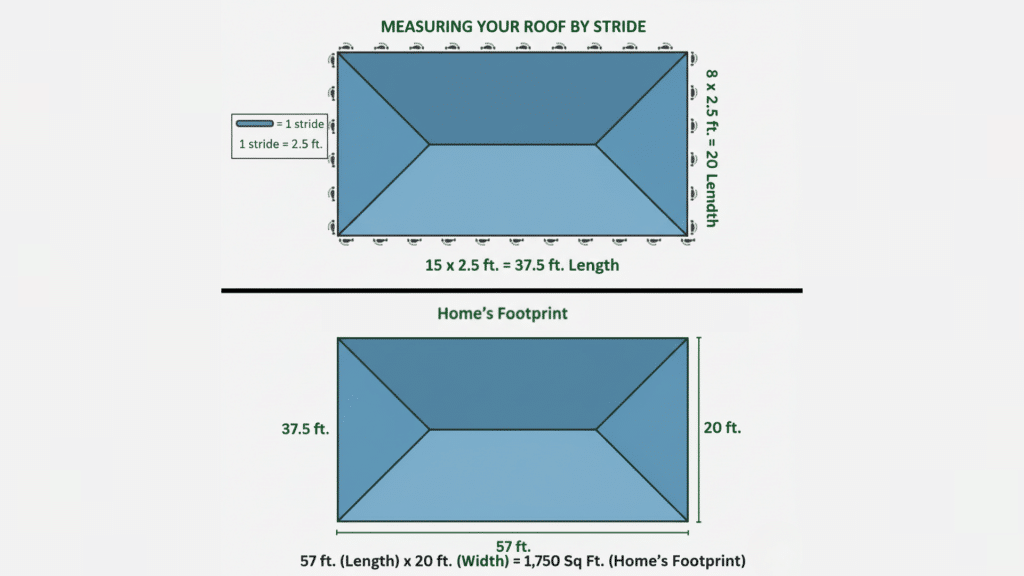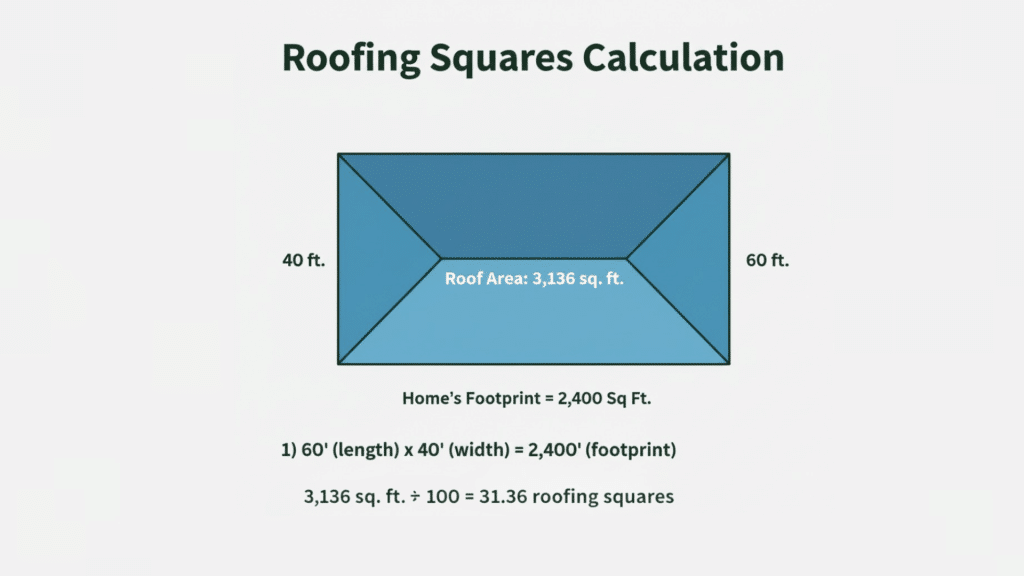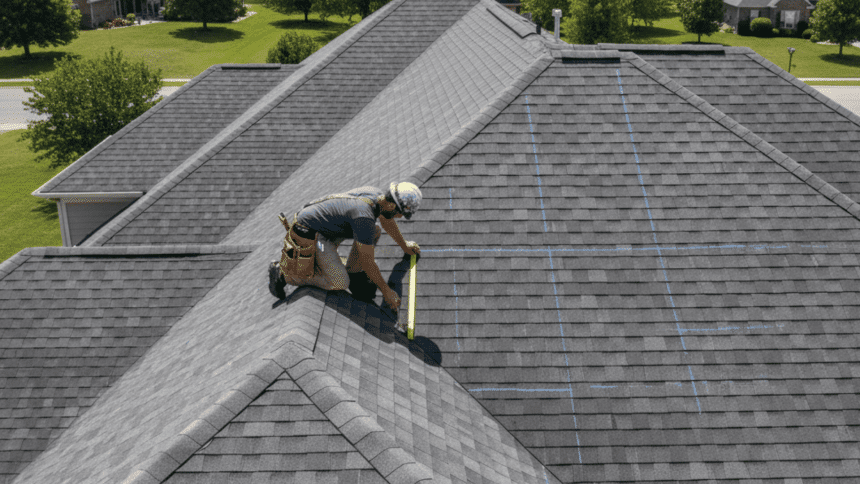If you’re planning to replace or repair your roof, you’ve probably heard contractors throw around the word “square.”
At first, it might sound confusing. After all, roofs aren’t usually perfect squares, right? Understanding what a roofing square actually means can save you money and help you make smarter decisions about your home.
If you’re a homeowner getting quotes or a DIY enthusiast tackling a project, knowing this basic roofing term is super important.
Think of it like learning the rules before playing a new game; once you understand the basics, everything else makes a lot more sense.
What Is a Roofing Square?
One roofing square equals 100 square feet of roof surface. That’s it! It’s just a way to measure roof area that makes everyone’s life easier.
But why do roofers use “squares” instead of just saying square feet like we do for floors or walls?
Good question! The roofing industry started using squares a long time ago to simplify its work. Imagine trying to say “I need materials for 2,847 square feet” every single time.
It’s a mouthful! Instead, roofers can say, “I need materials for about 28 squares,” which is much quicker and cleaner.
A typical single-story home might have a roof that measures anywhere from 15 to 25 squares. That means the roof covers between 1,500 and 2,500 square feet.
A larger two-story house could easily have 30 to 40 square feet or even more. By using squares instead of square feet, contractors can quickly estimate materials, labor, and costs without dealing with big, complicated numbers.
Why Is It Used in Roofing Estimating?
Using roofing squares makes communication between everyone involved much smoother. When a contractor talks to a supplier, they can simply say, “I need enough shingles for 20 squares.”
The supplier immediately knows exactly how much material to prepare. No confusion, no mistakes.
This system also helps standardize pricing. Most roofing contractors charge by the square, not by the hour or by square foot.
You might hear something like, “We charge $350 per square for asphalt shingle installation.” This makes it super easy to compare quotes from different companies.
If one roofer charges $400 per square and another charges $300, you can quickly see the difference and ask why.
Plus, ordering materials becomes a breeze. Shingles, underlayment, nails, and everything in roofing are typically sold by the square. This helps roofers plan jobs better, reduce waste, and keep costs under control.
How to Calculate Roofing Squares (Step-by-Step)
Ready to figure out how many squares your roof has? Here’s a simple process anyone can follow:
Step 1: Figure out your home’s footprint

First, you need to determine your home’s footprint by finding its length and width. Here’s an easy trick: walk along each side of your home and count your strides.
A person of average height has a stride of about 2 to 3 feet, so let’s use 3 feet as our baseline. After counting your strides on each side, multiply those numbers by 3 to get approximate measurements in feet.
| Formula | Example |
|---|---|
| Length × Width = Home Footprint | 57 ft × 20 ft = 1,750 sq ft |
Step 2: Add the pitch and complexity multiplier

Next, you need to factor in your roof’s pitch (how steep it is) and its complexity. Not all roofs are created equal.
Some are simple and walkable, while others are steep and complicated with dormers and valleys. Use your best judgment to pick which category your roof fits into from the table below.
This multiplier accounts for the extra surface area created by slopes and angles.
| Pitch and Complexity | Multiplier | Formula |
|---|---|---|
| Up and over, walkable roof | 1.3 | Footprint × 1.3 = Roof Square Footage |
| Some complexity, 5/12 – 8/12 pitch | 1.4 | Footprint × 1.4 = Roof Square Footage |
| Complex and steep (8/12 or steeper) | 1.6 | Footprint × 1.6 = Roof Square Footage |
| Footprint × Multiplier = Roof Square Footage | 1,750 sq ft × 1.4 |
Step 3: Divide by 100 to get roofing squares

Finally, you get the number of squares by simply dividing the total square footage by 100. This converts your measurement into the unit that roofers actually use when ordering materials and giving quotes.
The result tells you how many roofing squares your home needs. Always round up to the nearest whole number when ordering materials to make sure you have enough.
| Formula | Example |
|---|---|
| Total Roof sq ft ÷ 100 = Roofing Squares | 3,136 sq ft ÷ 100 = 31.36 squares |
Why Interior Floor Footage Is Not Reliable for Calculating Roof Squares
People think their roof size is the same as their floor space. Unfortunately, that’s not how it works.
Your interior floor area might be 1,800 square feet, but your roof could be 2,200 square feet or more.
Why? Roofs have slopes, overhangs, dormers, and multiple angles that add extra surface area. Think of it like wrapping a present; the paper needs to be bigger than the box itself to cover all the sides and folds.
Using your floor footage to estimate roofing materials will almost always give you a number that’s too low. This can lead to nasty surprises when your contractor tells you the real cost, or worse, you run out of materials mid-project.
Here’s an example: Imagine two identical houses, both 1,500 square feet inside. One has a flat roof, and the other has a steep, complex roof with multiple peaks. The flat roof might only be 16 squares, but the steep roof could be 22 squares or more. Same floor space, totally different roof area.
Other Factors That Influence Roofing Cost (Beyond Just Squares)
Knowing your roof’s square footage is important, but it’s not the only thing that affects your final bill. Here are some other big factors:
- Roof material type: Asphalt shingles are usually the cheapest option, while metal, tile, and slate can cost much more per square. The material you choose makes a huge difference.
- Roof complexity: A simple rectangular roof is easier and faster to work on than a roof with lots of valleys, dormers, and chimneys. More complexity means more labor, more time, and more money.
- Waste and cutting loss: Complex roofs create more waste because workers have to cut and trim materials to fit odd angles. This means you’ll need to order more material than the basic calculation suggests.
- Old roof removal: If your old roof needs to come off first, that adds labor and disposal costs. Some jobs let you layer new shingles over old ones, but that’s not always possible or recommended.
- Location and labor rates: Where you live matters. Roofing costs in big cities are usually higher than in rural areas. Local labor rates, permitting fees, and even weather conditions all play a role.
- Warranties and quality: Higher-quality materials often come with better warranties, but they also cost more upfront. It’s worth considering the long-term value, not just the initial price.
Roofing Terms That Often Confuse Homeowners

Let’s clear up some common roofing vocabulary that trips people up:
- Bundle of shingles: Shingles come in bundles, not by the square. For most standard asphalt shingles, it takes about three bundles to cover one square. So if you need 20 squares, you’re looking at about 60 bundles.
- Pitch or roof slope: This describes how steep your roof is. It’s written as a ratio, like 4:12, which means the roof rises 4 inches for every 12 inches of horizontal distance. Steeper pitches are harder to work on and require more material.
- Waste factor: This is the extra percentage of material you order to account for mistakes, cuts, and odd pieces. Most roofers add 10-15%, but complicated roofs might need even more.
- Underlayment and ice & water shield: These are protective layers that go under your shingles. They’re not always included when someone quotes you a price “per square,” so always ask what’s included.
- Valley, hip, and ridge: These are different roof features. Valleys are where two roof planes meet in a V-shape. Hips are where planes meet on an outside corner. Ridges are the top peaks of the roof. All of these add complexity and surface area.
Conclusion
Understanding what a roofing square is gives you a powerful tool when planning any roofing project. It helps you talk confidently with contractors, compare quotes accurately, and avoid costly surprises.
Remember, one square equals 100 square feet, and your roof size is almost always bigger than your floor space because of slopes and overhangs.
Don’t be afraid to ask questions when getting estimates. A good contractor will be happy to explain how they calculated your roof’s squares and what factors affect your final cost.
By knowing the basics, you’re empowering yourself to make smarter decisions and get the best value for your money.

